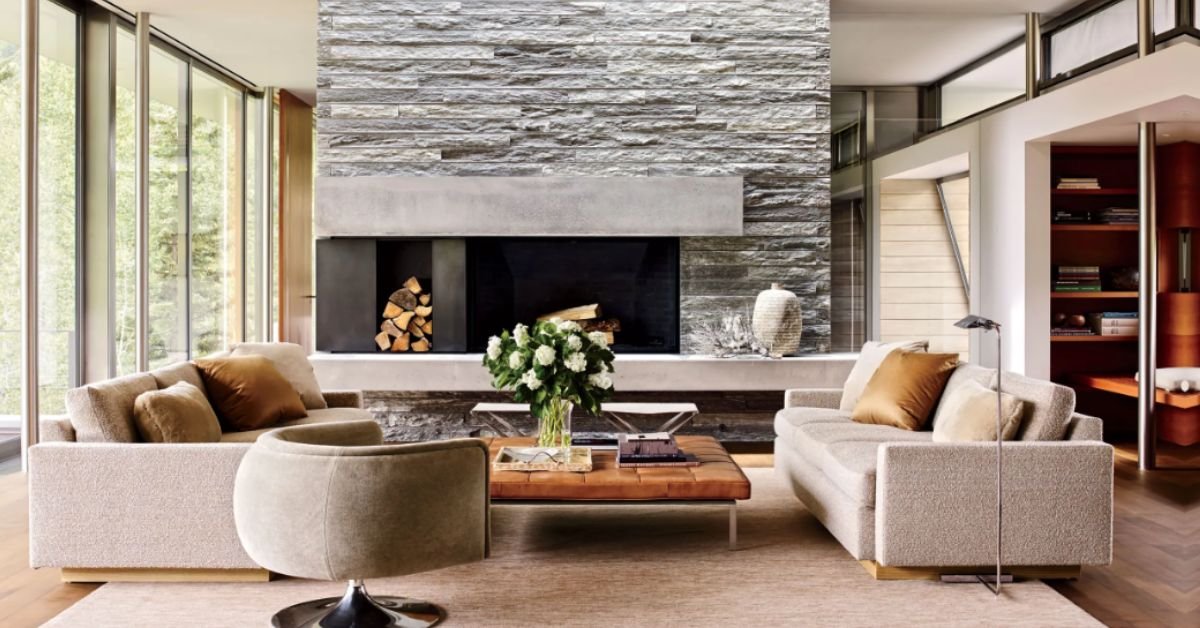Contemporary interior design is the epitome of modern elegance, combining simplicity with functionality. It focuses on clean lines, neutral colours, and subtle sophistication while blending timeless appeal with innovative ideas. This article unpacks the six essential elements of contemporary interior design, providing tips and inspiration to create a stylish and inviting space.
What Defines Contemporary Interior Design?
Contemporary interior design is characterized by its adaptability, blending various influences into a cohesive style. Here’s what sets it apart:
Clean Lines
Emphasis is placed on sleek, uncluttered forms that create a harmonious aesthetic.
Minimalist Approach
Less is more in contemporary design, with clutter-free spaces being a priority.
Versatile Materials
Contemporary design celebrates versatility, from natural wood and stone to industrial finishes like steel and glass.
Simplicity in Design
Simplicity is the cornerstone of contemporary interiors, ensuring a clean and clutter-free aesthetic.
Open Spaces
Contemporary design embraces open floor plans, making spaces more extensive and connected.
Functional Furniture
Opt for multi-purpose furniture with simple, geometric forms to maximize utility without sacrificing style.
Neutral Color Palettes
Stick to whites, greys, and earth tones as your base, with pops of colour for accents.
Use of Texture and Material
The interplay of different textures and materials is crucial in contemporary interior design.
Natural Elements
Incorporate wood, stone, and leather to add warmth and character to your space.
Contrasting Textures
Mix smooth surfaces with textured accents, such as a sleek marble countertop with a plush rug.
Metal and Glass
Metallic finishes and glass elements add modern sophistication and reflect light beautifully.
Focus on Lighting
Lighting in contemporary design serves both functional and aesthetic purposes.
Layered Lighting
Combine ambient, task, and accent lighting to create depth and flexibility in your space.
Statement Fixtures
Chandeliers, pendant lights, or sculptural lamps can serve as focal points while enhancing the room’s style.
Natural Light
Maximize using windows, skylights, or mirrors to brighten interiors with natural light.
Emphasis on Art and Décor
Art and décor are essential for adding personality and breaking the monotony of clean designs.
Large-Scale Art
Oversized paintings or photographs can serve as bold statements on neutral walls.
Minimal Accessories
Choose high-quality, purposeful pieces over an abundance of decorations.
Sculptural Elements
Incorporate sculptures or artistic furniture pieces to add depth and character.
Functional and Flexible Spaces
Contemporary interiors are all about creating spaces that adapt to your needs.
Modular Furniture
Choose sectional sofas, foldable tables, or stackable chairs to enhance functionality.
Hidden Storage
Built-in shelves, under-bed compartments, or sleek cabinets maintain a clean and organized look.
Multi-Purpose Areas
Design spaces that serve multiple functions, such as a dining area that doubles as a home office.
Eco-Friendly and Sustainable Choices
Sustainability is becoming increasingly integral to contemporary design.
Recycled Materials
Incorporate recycled wood, glass, or metal to reduce your environmental impact.
Energy-Efficient Lighting
LED lighting options not only save energy but also provide a modern aesthetic.
Indoor Plants
Greenery purifies the air and adds a natural, vibrant touch to interiors.
FAQs on Contemporary Interior Design
What is the main focus of contemporary interior design?
Contemporary design emphasizes simplicity, functionality, and the use of modern materials to create stylish yet practical spaces.
Can contemporary design work in small spaces?
Its minimalist approach and focus on open layouts make contemporary design ideal for small spaces.
How can I add warmth to a contemporary interior?
Incorporate natural textures like wood, plush fabrics, or warm lighting to soften the modern aesthetic.
Is contemporary design the same as modern design?
No, contemporary design evolves with time and trends, whereas modern design refers to a specific historical style from the early to mid-20th century.
What colours work best in contemporary interiors?
Neutral palettes like white, grey, and beige work well, accented by bold or vibrant hues for a modern touch.
How can I make a contemporary space eco-friendly?
Use sustainable materials, energy-efficient lighting, and natural elements like plants to create an eco-conscious interior.
Conclusion
The six essential elements of contemporary interior design—simplicity, texture, lighting, art, functionality, and sustainability—provide the foundation for creating a stylish and versatile space. Combining clean lines, neutral tones, and thoughtful details allows you to design a home that reflects modern sophistication and comfort. Whether revamping a single room or reimagining your entire home, contemporary design offers endless possibilities to suit your style.
Latest Post!
- The Ultimate Guide to Luxurious and Eco-Friendly Bath Products: Featuring Cunke
- Bailey Self Storage: The Secure and Convenient Storage Solution You Need
- PR Construction, LLC: Building Dream Homes with Exceptional Craftsmanship
- A Detailed Look at Lang’s Painting: Unveiling the Artistry Behind the Masterpieces
- Moving Made Easy with AMPOL Moving, Inc.: Your Trusted Illinois Partner
- WepBound: A Groundbreaking Platform Revolutionizing Digital Connectivity






